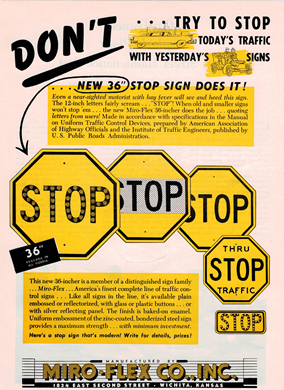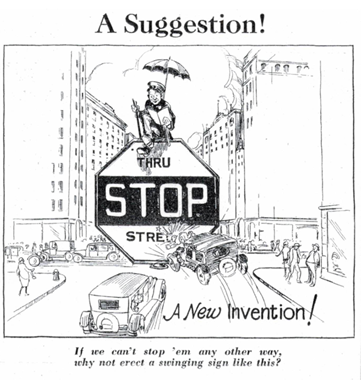The forerunner of the modern stop sign was designed by the Mississippi Valley Association of State Highway Departments in 1923. Their stop sign had a yellow octagon with black lettering. The general theory of the Mississippi Valley planners was that the more corners a particular sign had, the more hazard a driver would recognize. Thus, the most dangerous hazard of the 1920s, railroad crossings, received a circular sign, since circles have an infinite number of corners, and the second-most-dangerous hazard, a mandatory stop at an intersection, received an octagonal sign. Ordinary hazard signs were diamond-shaped, and are generally recognizable as the progenitor of modern hazard signs.

1924-1954 – When yellow stop signs were the rule. “Don’t try to stop today’s traffic with yesterday’s signs”




